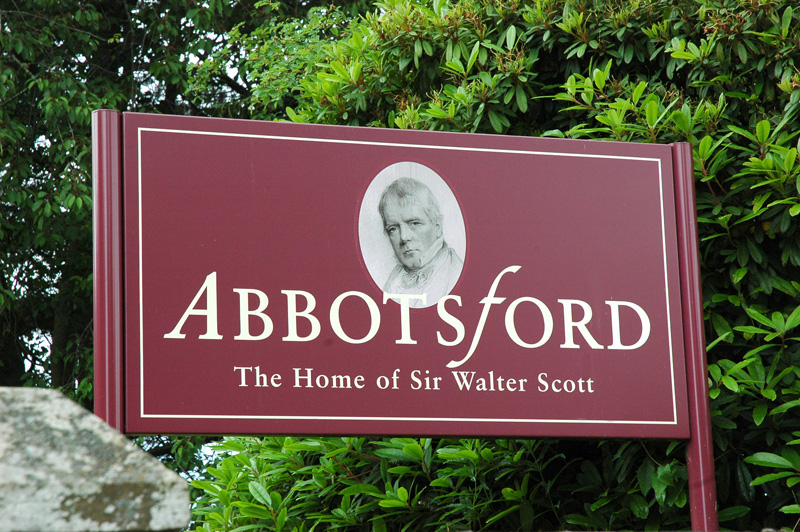
Abbotsford notice board © 2007 Scotiana
Hi everybody,
Today is September 21st, the first day of the autumn season though here, in the south of France, it looks like a summer day, warm and sunny! I wonder what is the weather like in Scotland now…
Is it as beautiful as it was, 179 years ago, in that quiet and beautiful corner of the Scottish Borders where Abbotsford, Sir Walter Scott”s house, was about to live one of its saddest days. On that 21 September 1832, if the weather happened to be fine, the hearts were heavy as Sir Walter was saying adieu to his beloved family, friends, servants and faithful dogs, leaving them forever…
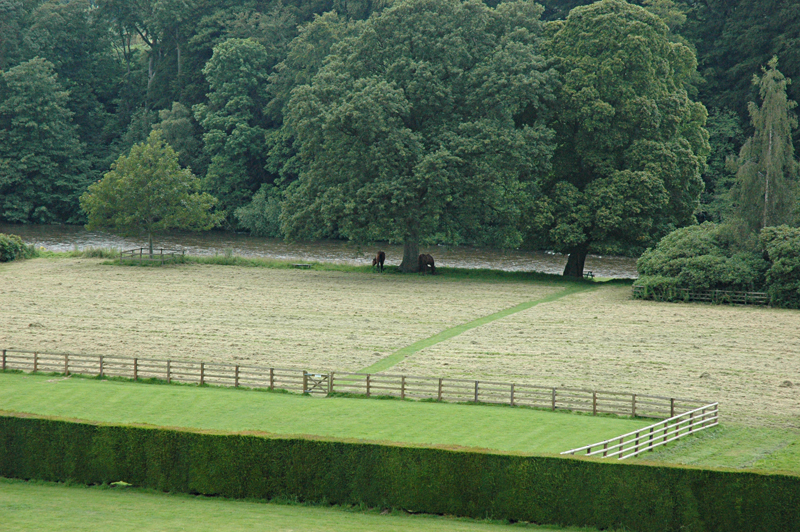
Abbotsford view upon the Tweed River © 2007 Scotiana
Here is what John Gibson Lockhart, Sir Walter’s son-in-law, writes about this mourning day :
“About half-past one P.M. on the 21st of September, Sir Walter breathed his last, in the presence of his children. It was a beautiful day – so warm, that every window was wide open – and so perfectly still, that the sound of all others most delicious to his ear, the gentle ripple of the Tweed over its pebbles, was distinctly audible as we knelt around the bed, and his eldest son kissed and closed his eyes. No sculptor ever modelled a more majestic image of repose.” (Narrative of the Life of Sir Walter Scott, Bart (*)- John Gibson Lockhart)
A few days before Sir Walter had called for his son-in-law:
“As I was dressing on the morning of Monday the 17th of September, Nicolson came into my room, and told me that his master had awoke in a state of composure and consciousness, and wished to see me immediately. I found him entirely himself, though in the last extreme of feebleness. His eye was clear and calm – every trace of the wild fire of delirium extinguished. ‘Lockhart’, he said, ‘I may have but a minute to speak to you. My dear, be a good man – be virtuous – be religious – be a good man. Nothing else will give you any comfort when you come to lie here.’ – He paused, and I said – ‘Shall I send for Sophia and Anne?’ – ‘No,’ said he, ‘don’t disturb them. Poor souls! I know they were up all night – God bless you all.’ – With this he sunk into a very tranquil sleep, and, indeed, he scarcely afterwards gave any sign of consciousness, except for an instant on the arrival of his sons.” (Narrative of the Life of Sir Walter Scott, Bart – John Gibson Lockhart)
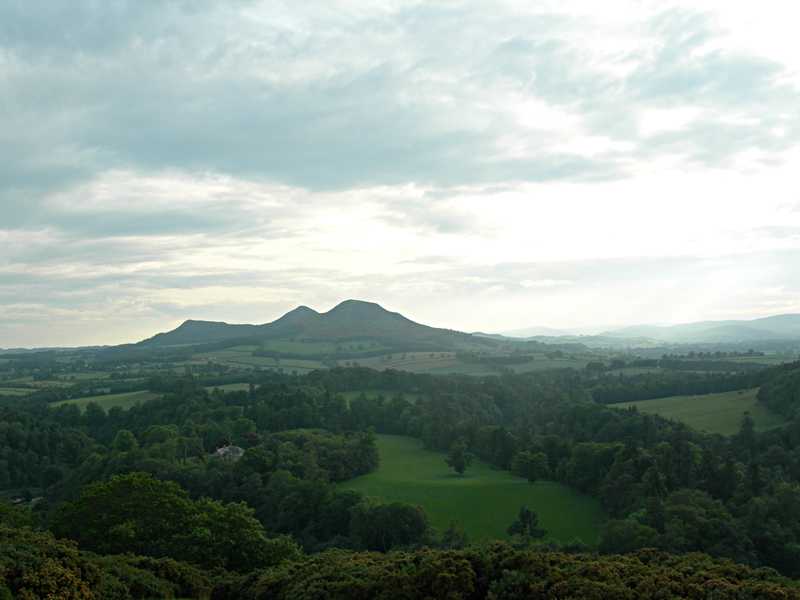
Scott's View Eildon Hills © 2006 Scotiana
A few days before, Sir Walter had come back exhausted from a long journey in Italy which had been supposed to restore his health, and he had arrived just in time to see once again his dear Abbotsford, on the banks of the Tweed river, not far from the now famous Scott’s view with the Eildon Hills towering up in the horizon. There, five days later, on the 26th September 1832, Sir Walter’s horses which led the long and grieving funeral procession would naturally stop a last time on their way to their master’s final rest, in the beautiful Dryburgh Abbey.
‘Almost every newspaper that announced this event in Scotland, and many in England, had the signs of mourning usual on the demise of a king. With hardly an exception, the voice was that of universal, unmixed grief and veneration.’
‘His funeral was conducted in an unostentatious manner, but the attendance was very great. Few of his old friends then in Scotland were absent, – and many, both friends and strangers, came from a great distance. His domestics and foresters made it their petition that no hireling hand might assist in carrying his remains. They themselves bore the coffin to the hearse, and from the hearse to the grave.’
(Narrative of the Life of Sir Walter Scott, Bart – John Gibson Lockhart)
I can’t help associating with the beautiful Scott’s view one personal memory which is quite in keeping with the mood of my article. It was at the end of a grey day, on June 17 2006. I had decided to walk alone down the valley to see what the landscape looked like below when I fell upon a very moving testimony on the path.
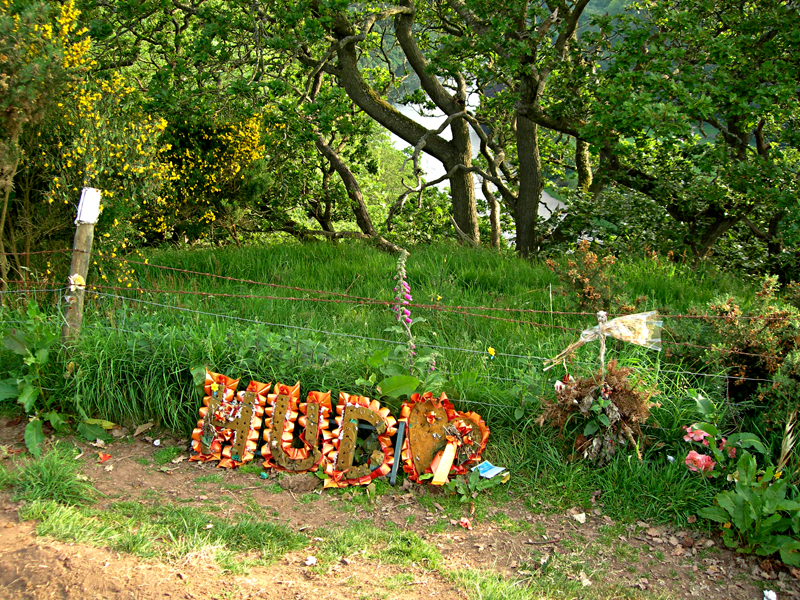
Scottish Borders Unknown In Memoriam on the Scott's View path © 2006 Scotiana
I stopped still and stayed a few minutes meditative and silent before going on. I will never forget that moment.
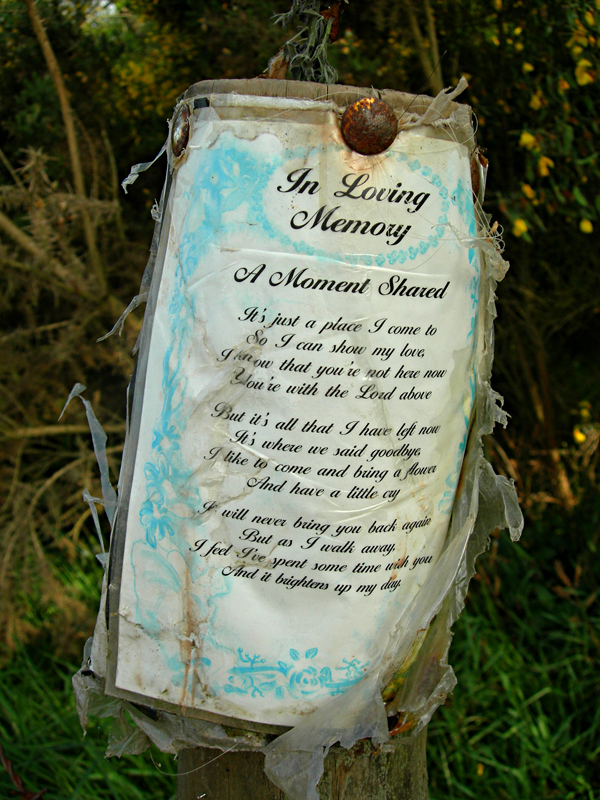
Scottish Borders Scott's View In Memoriam poem © 2006 Scotiana
Here is the little poem which was tied to a wooden post…
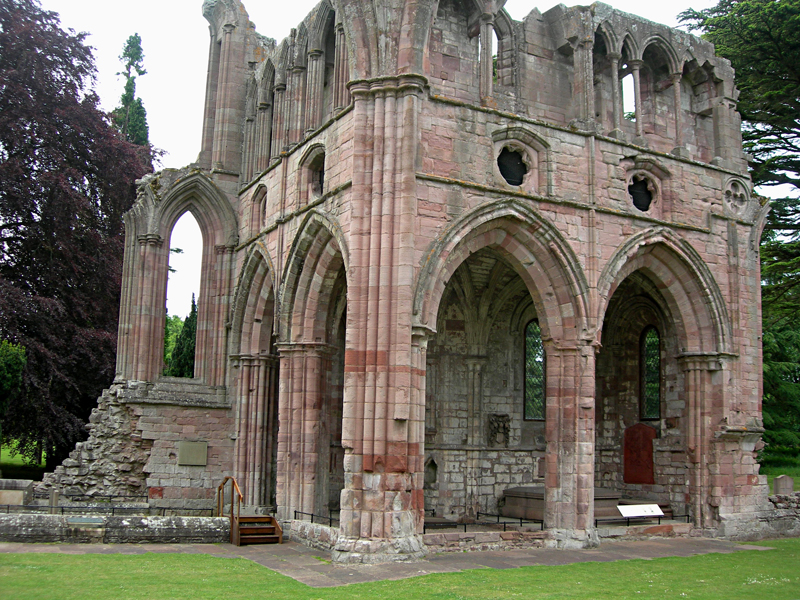
Dryburgh Abbey Walter Scott's grave © 2006 Scotiana
Sir Walter rests in a most romantic place, under the shade of a beautiful sandstone arched building. With its mediaeval ruins, its majestic trees, Dryburgh Abbey is a remarkable place where Sir Walter used to come very often.
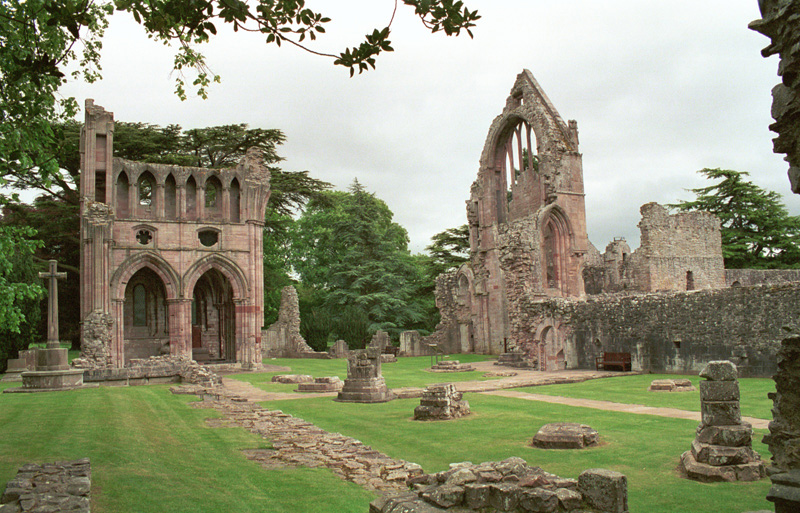
Scottish Borders Dryburgh Abbey © 2001 Scotiana
Below are a few interesting extracts from the description of Dryburgh Abbey I’ve found on the website of Historic Scotland which maintains the site :
The graceful ruins of Dryburgh Abbey nestle in wooded seclusion beside the River Tweed. On entering, the visitor immediately understands why the contemplative life of a medieval monk was attractive. The abbey was established in 1150 by white-clad Premonstratensian canons (…)
At Dryburgh, the visitor gets closer to the cloistered life of the medieval monk than perhaps anywhere else in Scotland.
There is an atmosphere of peace and tranquillity; and the abbey church and cloister – the spiritual and domestic homes of the brethren – remain substantially complete. The church is a fine relic of Gothic architecture, particularly the transepts flanking the presbytery, lovingly hewn from warm-pink sandstone. The cloister retains its feeling of privileged enclosure. Its highlight is the 13th-century chapter house, which still has precious painted wall-plaster surviving, and a wonderful acoustic. Other features of interest include the warming house and dormitory in the east range.
In the 18th century, the ivy-clad ruin attracted the attention of David Erskine, 11th Earl of Buchan. The chief founder of the Society of Antiquaries of Scotland in 1780, Buchan purchased Dryburgh House and set about creating a charming landscape, in which the ancient abbey figured prominently.
When he died in 1829, he was laid to rest in its sacristy. Three years later, on 26 September 1832, Buchan’s close friend, Sir Walter Scott, antiquarian and novelist, was buried in the north transept (which he called ‘St Mary’s Aisle’). A third great Scot, Field-Marshal Earl Haig, was interred beside Scott in 1928.
In a reverential silence I end this post, feeling like opening one of the last pages of Sir Walter’s Journal.
1832, April 16
Having remained several months at Naples, we resolved to take a tour to Rome during the Holy Week and view the ecclesiastical shows which take place, although diminished in smplendour by the Pope’s poverty. So on the 15th we set out from Naples, my children unwell… We entered Rome by a gate renovated by one of the old Pontiffs, but which, I forget, and so paraded the streets by moonlight to discover, if possible, some appearance of the learned Sir William Gell or the pretty Mrs. Ashley. At length we found our old servant who guided us to the lodgings taken by Sir William Gell, where all was comfortable, a good fire included, which our fatigue and the chilliness of the night required. We dispersed as soon as we had taken some food, wine and water.
We slept reasonably, but on the next morning
That’s where the Journal ends…
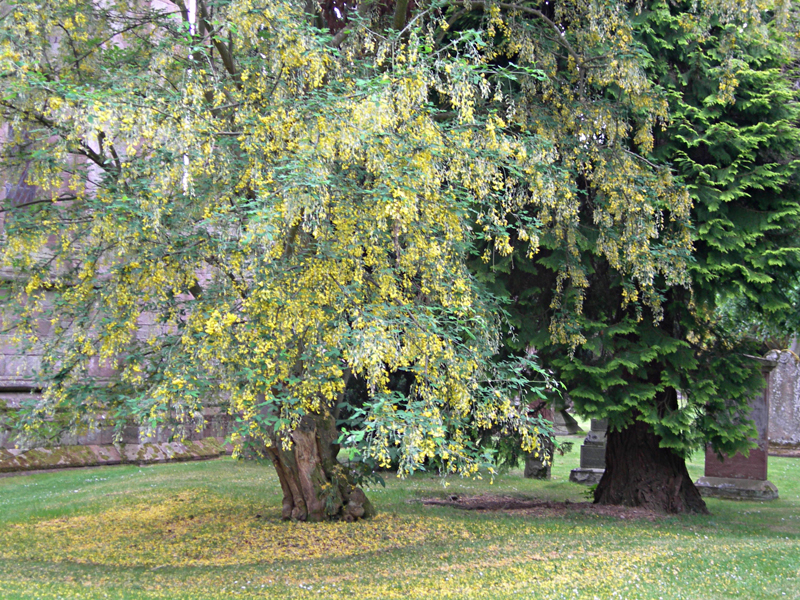
Dryburgh Abbey wooded park © 2006 Scotiana
Bonne lecture!
A bientôt. Mairiuna
Note: (*)=Baronet



Leave a Reply